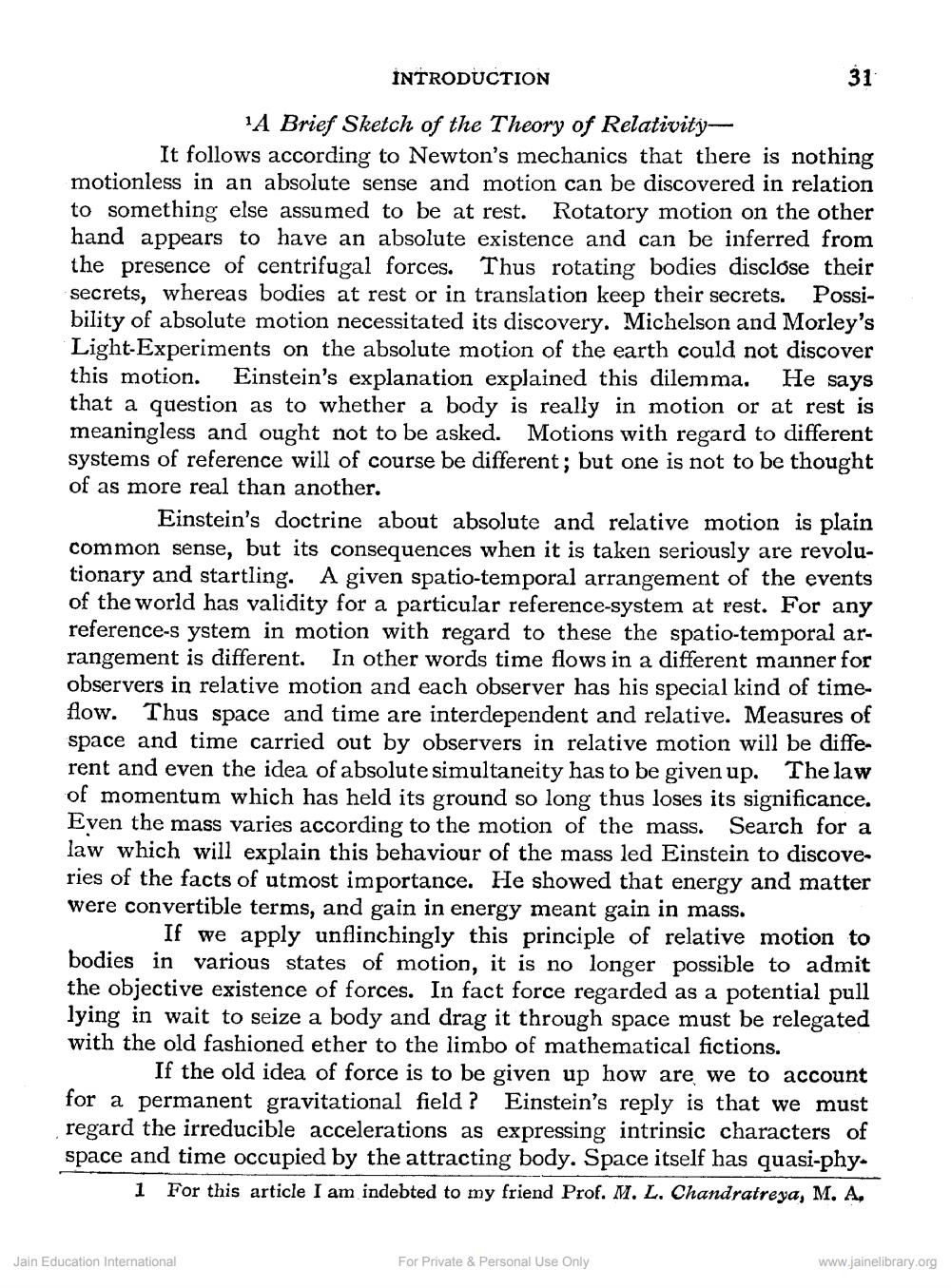________________
INTRODUCTION
1A Brief Sketch of the Theory of Relativity
It follows according to Newton's mechanics that there is nothing motionless in an absolute sense and motion can be discovered in relation to something else assumed to be at rest. Rotatory motion on the other hand appears to have an absolute existence and can be inferred from the presence of centrifugal forces. Thus rotating bodies disclose their secrets, whereas bodies at rest or in translation keep their secrets. Possibility of absolute motion necessitated its discovery. Michelson and Morley's Light-Experiments on the absolute motion of the earth could not discover this motion. Einstein's explanation explained this dilemma. He says
that a question as to whether a body is really in motion or at rest is meaningless and ought not to be asked. Motions with regard to different systems of reference will of course be different; but one is not to be thought of as more real than another.
31
Einstein's doctrine about absolute and relative motion is plain common sense, but its consequences when it is taken seriously are revolutionary and startling. A given spatio-temporal arrangement of the events of the world has validity for a particular reference-system at rest. For any reference-s ystem in motion with regard to these the spatio-temporal arrangement is different. In other words time flows in a different manner for observers in relative motion and each observer has his special kind of timeflow. Thus space and time are interdependent and relative. Measures of space and time carried out by observers in relative motion will be different and even the idea of absolute simultaneity has to be given up. The law of momentum which has held its ground so long thus loses its significance. Even the mass varies according to the motion of the mass. Search for a law which will explain this behaviour of the mass led Einstein to discoveries of the facts of utmost importance. He showed that energy and matter were convertible terms, and gain in energy meant gain in mass.
If we apply unflinchingly this principle of relative motion to bodies in various states of motion, it is no longer possible to admit the objective existence of forces. In fact force regarded as a potential pull lying in wait to seize a body and drag it through space must be relegated with the old fashioned ether to the limbo of mathematical fictions.
If the old idea of force is to be given up how are we to account for a permanent gravitational field? Einstein's reply is that we must regard the irreducible accelerations as expressing intrinsic characters of space and time occupied by the attracting body. Space itself has quasi-phy1 For this article I am indebted to my friend Prof. M. L. Chandratreya, M. A,
Jain Education International
For Private & Personal Use Only
www.jainelibrary.org




